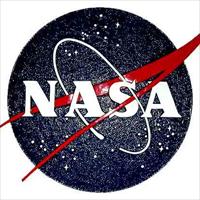NASA Offers Millions For Space Technology Delivered By 2012
NASA seems to have a big interest in acquiring top-notch space travel equipment by the year 2012. They are offering hundreds of millions of dollars to companies who can design and build high tech space travel vehicles. Why is the year 2012 so important to NASA and the Government?
Is this just a goal timetable, or is 2012 the deadline? The NASA website clearly says "no later than 2012", so this is a deadline. According to President Bush's earlier speeches, he plans to put men on the moon again by 2012. He speaks about moon bases, manned Mars missions, and the likes. Why this big space pushes by 2012?
According to the ancients, 2012 is supposed to be the end of Human life, as we know it. A dimensional shift. This theory is just gaining creditability, even though it was preached more than 5,000 years ago. If you are unfamiliar with the theory, Google it. You will be overwhelmed by the results.
One could argue NASA and Other Governmental Agencies are aware of what will happen in 2012, and are preparing for it, and others can argue 2012 is a random date that just happened to fall in the same year as the Ancient Mayans and Sumerians predicted.
In April, 2003 NASA Released This
NASA announced approximately $135 million will be awarded to three competing contractor teams to continue support of NASA's Orbital Space Plane program under the Space Launch Initiative to provide crew rescue and transfer capabilities to the International Space Station. The three system design contractor teams — The Boeing Company of Seal Beach, Calif.; Lockheed Martin Corp. of Denver; and a team including Orbital Sciences Corp. of Dulles, Va., and Northrop Grumman of El Segundo, Calif. — will each receive approximately $45 million to design potential candidates for the system, including the Orbital Space Plane vehicle or vehicles, ground operations and all supporting technologies needed to conduct a mission to and from the Space Station.
NASA today announced approximately $135 million dollars will be awarded to three competing contractor teams to continue support of NASA’s Orbital Space Plane program under the Space Launch Initiative to provide crew rescue and transfer capabilities to the International Space Station.
The awards are a part of a contract modification of a Cycle 1 Space Launch Initiative solicitation originally awarded in May 2001. This modification extends existing contracts through July 2004.
The Orbital Space Plane program will provide the capability for crew rescue by 2010 and the capability for crews to transfer to and from the International Space Station by 2012.
The three system design contractor teams — The Boeing Company of Seal Beach, Calif.; Lockheed Martin Corp. of Denver; and a team including Orbital Sciences Corp. of Dulles, Va., and Northrop Grumman of El Segundo, Calif. — will each receive approximately $45 million to design potential candidates for the system, including the Orbital Space Plane vehicle or vehicles, ground operations and all supporting technologies needed to conduct a mission to and from the Space Station.
The contract modification includes work to develop system specifications, including systems analysis, trade studies and concept feasibility in preparation for NASA’s Orbital Space Plane Program’s Systems Requirements Review. The review, scheduled for October 2003, will evaluate the concept design based on the Level 1 requirements — guidelines that lay out the foundation and top-level needs of the system. The review will also set Level 2 requirements that will further narrow the scope of the system design, including requirements for crew safety, cost, and interfacing with launch vehicles and the Space Station.
Once the Systems Requirements Review is complete, the contractors will begin work on the next phase, which includes trade studies, development of a conceptual design that meets Level 2 requirements and supporting analysis leading to NASA’s Systems Design Review, scheduled for April 2004. The Systems Design Review is a NASA-led review to validate the Level 2 requirements and determine Level 3 requirements to more precisely define the needs and specifications of the system. A full-scale development decision by NASA is expected in the fall of 2004.
The Orbital Space Plane program supports U.S. International Space Station requirements for crew rescue, crew transport, and contingency cargo such as supplies, food and other needed equipment. The system will initially launch on an expendable launch vehicle to provide rescue capability for no fewer than four Space Station crew members as soon as practical — but no later than 2010. It will also provide transportation capability for no fewer than four crew members to and from the Space Station as soon as practical -- but no later than 2012.
 Back and Next - Back and Next
Back and Next - Back and Next
 See Also - See Also
See Also - See Also